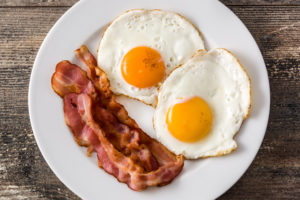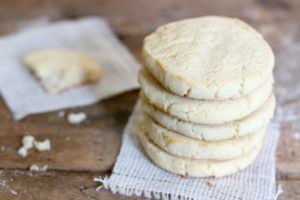Although there is a lot of controversy about feeding children a ketogenic diet… did you know the ketogenic diet was actually developed for children?
The ketogenic diet was created to help children who suffered from epilepsy to reduce seizures. Yet, it can also be used to help improve their health beyond their epilepsy.
What are the benefits of kids eating a keto diet? 
- The Keto diet is high in good quality fats which provides vitamins, important minerals, and essential amino acids that feed the brain.
- The Keto diet is also low in added sugar. Keeping the immune system strong to combat illnesses.
- The Keto diet is free of refined carbs and food additives which can cause health issues.
- It is positively impactful on behavior, mood, and social functioning. That’s a major plus!
For children, it is not necessary to be as strict on this diet as you would be for adults. Children are generally more insulin sensitive than adults, which means their bodies can deal with sugars and carbs more efficiently. Focus on good sources of protein (fatty beef), lots of good fats (essential for brain development) and getting the carb intake down to less than 30 grams a day.
So how can you get your kids on board doing keto?
If you are following a keto diet already, and want to introduce it to your kids, we suggest you do it in baby steps. Changing their entire diet overnight will be very stressful for your child, and they could end up being quite resistant to it.
Make sure their meals have plenty of meat and low carb vegetable options.
If snacks are needed after these awesome, filling meals, use keto-friendly versions. It is easier than you think – especially with so many great recipe bloggers experimenting with keto recipes. Instead of a sugar-filled cookie, make keto fathead sugar cookies. Instead of a bowl of jello, make keto jello bites.
 Once your kids are used to the new snacks, you can start replacing their favorite meals with keto-friendly versions:
Once your kids are used to the new snacks, you can start replacing their favorite meals with keto-friendly versions:
- Breakfast: keto pancakes or waffles, smoothies, eggs, and bacon, breakfast tacos
- Lunch or Dinner: sandwiches with low-carb bread, meatballs, keto pizza, chili, buffalo bites, keto enchiladas
- Desserts or Snacks: fat bombs, nuts or seeds/nut kinds of butter, jerky, keto cookies, or Good Fat Bars!
As long as the children are drinking plenty of water and meeting their macronutrient and micronutrient needs, they will be able to follow the ketogenic diet without any major issues. They may even be more focused and better behaved as a result of burning ketones for fuel.
A very helpful tool to figure out what macros your child needs to eat, use the keto calculator, Cronometer.
If your child is active and/or first starting keto, make sure they drink a couple of extra glasses (2-3 cups) of water on those days.
You also may want to implement some essential minerals that they need to get enough of:
- Sodium
5 to 7 grams of unrefined salt per day - Potassium
3,500 mg per day for people ages 16 and up - Magnesium
For men: ~400 mg per day
For women: ~310 mg per day
Ketovangelist also has a great post on transitioning children to more ketogenic diet foods and Healthful Pursuit has a list of fun, creative keto recipes that the kids might enjoy!
Infants, toddlers, and growing children need a good amount of iron and fat in their diet for proper growth. Healthy meat and other ketogenic foods provide plenty of both. These are important for brain development and growth as well as absorbing and using fat-soluble vitamins and building nerve tissue.
Yes, kids can do keto! Remember to track the macros as they become more fat-adapted, drink plenty of water, and watch the changes in their health and attitude! Plus, they will learn to grow up making healthy food choices and reaping the benefits.


